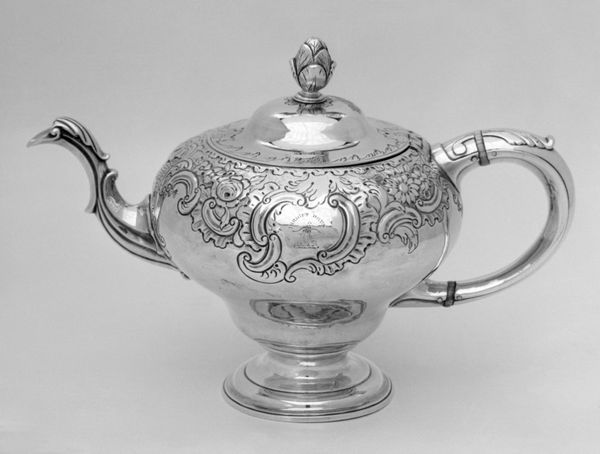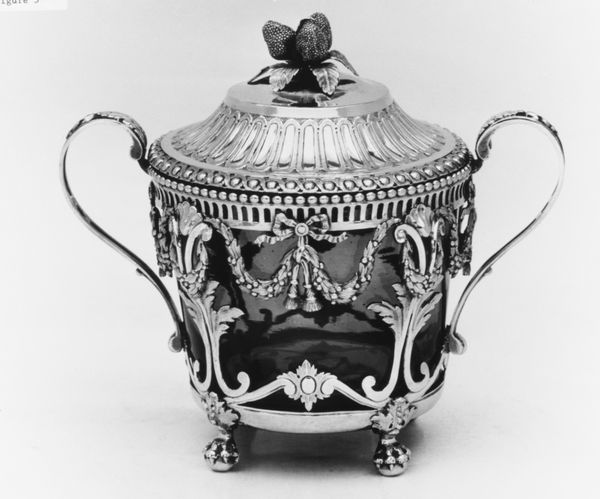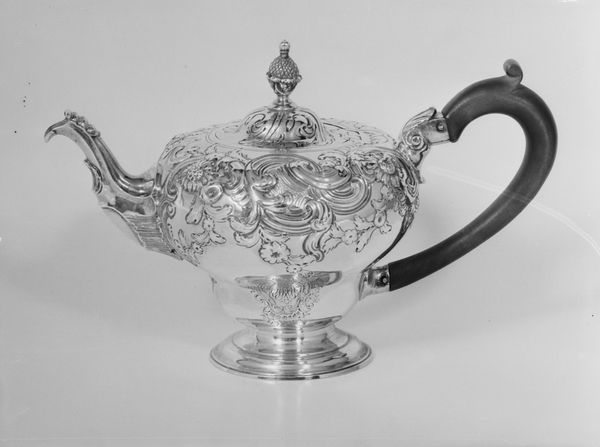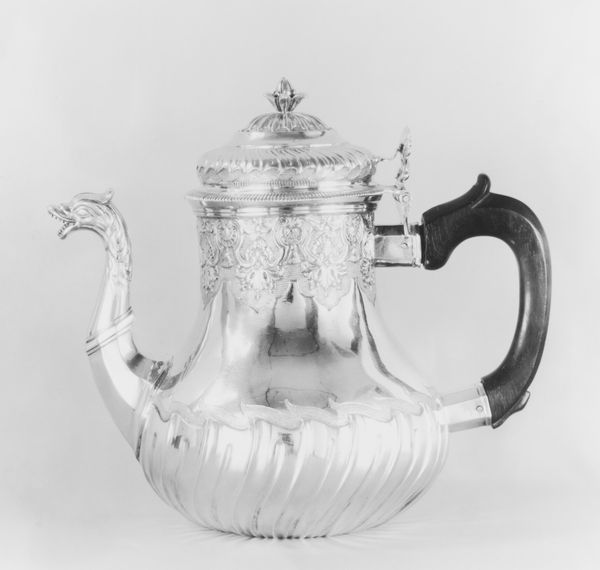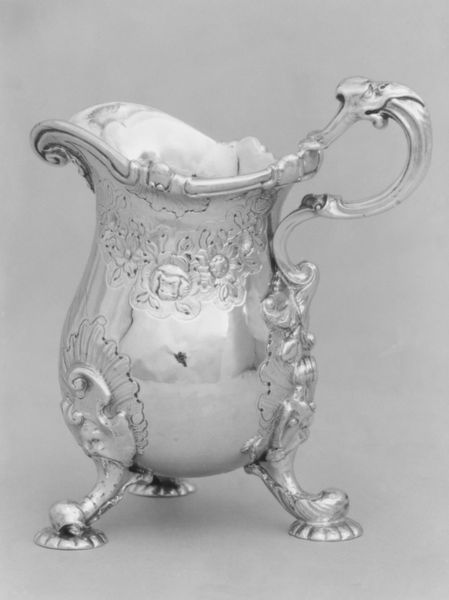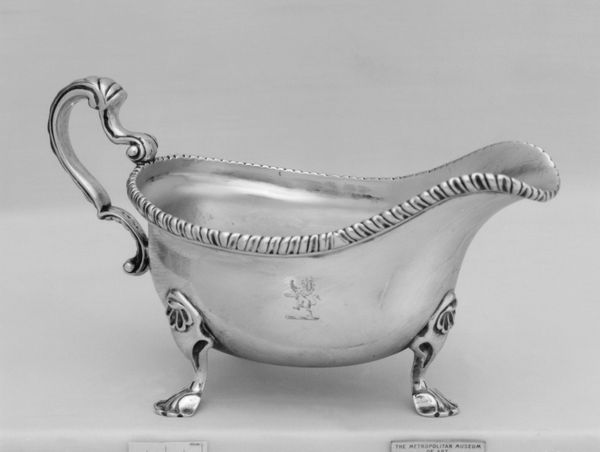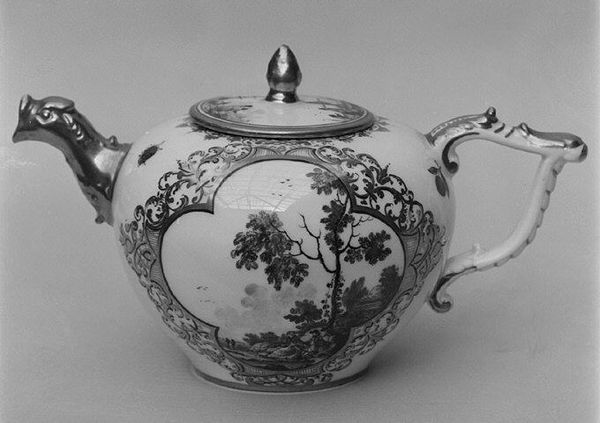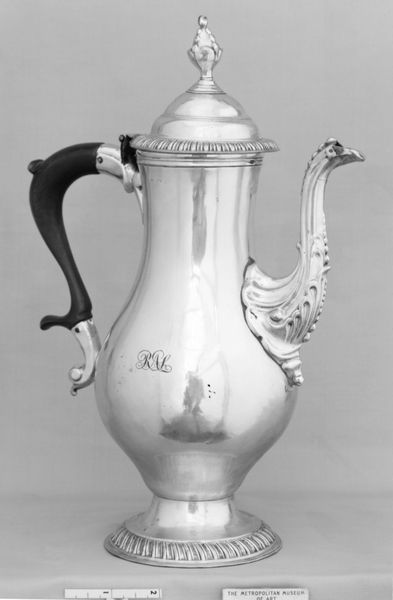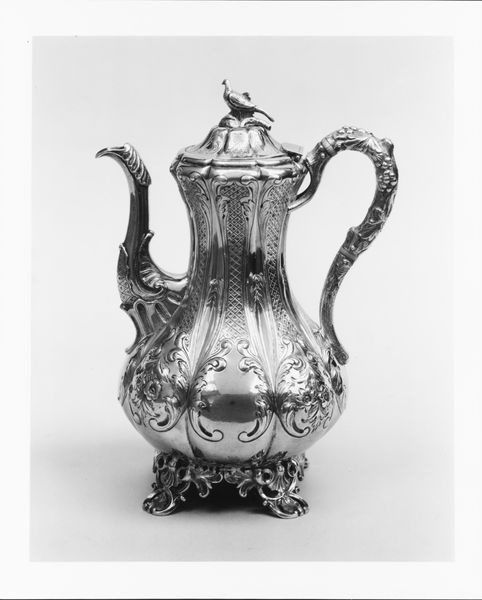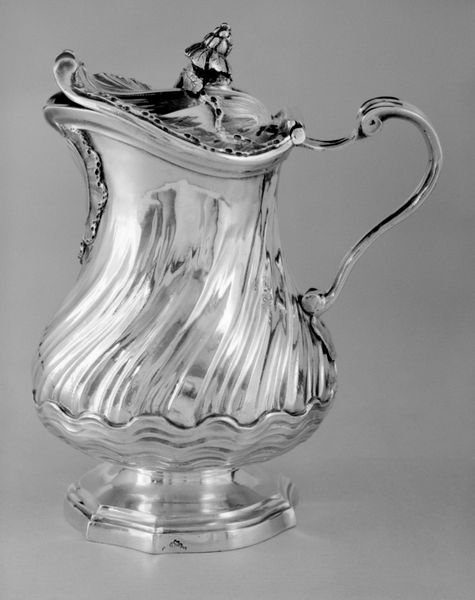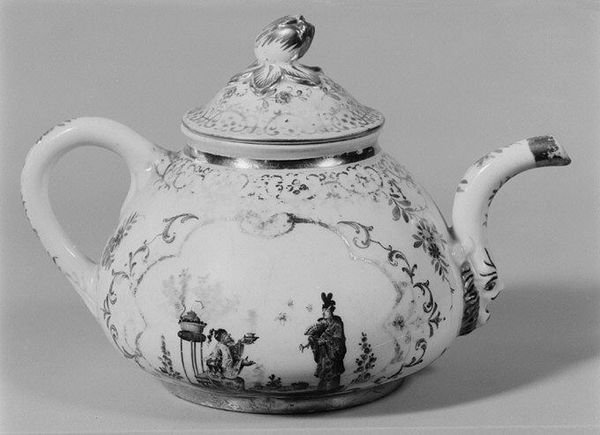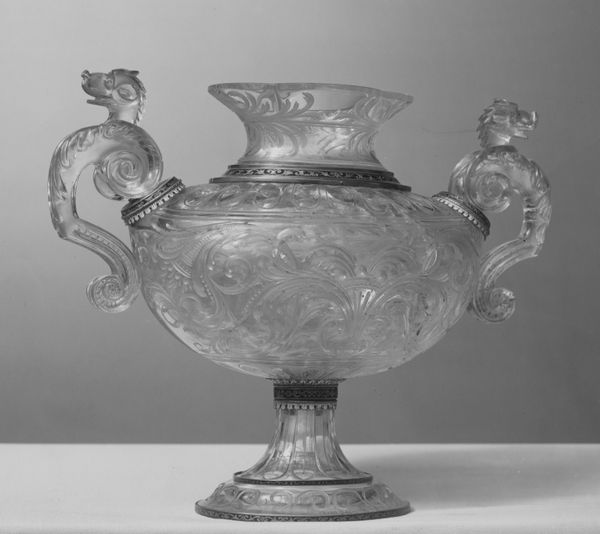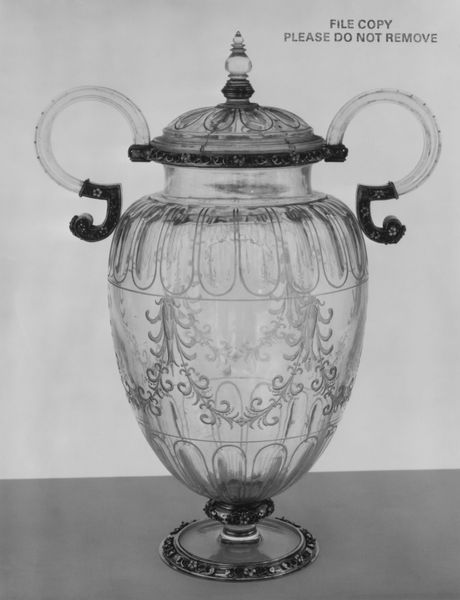
silver, metal, sculpture
#
silver
#
metal
#
sculpture
#
decorative-art
#
rococo
Dimensions: Height: 6 1/2 in. (16.5 cm)
Copyright: Public Domain
Curator: This exquisite object before us, known as the "Teapot," was crafted by the artisan John Deacon between 1769 and 1770. Housed here at the Metropolitan Museum of Art, it represents a pinnacle of Rococo silver work. Editor: It immediately strikes me as almost aggressively ornamental. The swirling, asymmetrically arranged embellishments evoke a sense of excessive consumption, a silent scream of elite privilege rendered in shining metal. Curator: Deacon's artistry certainly reflects the cultural moment. Silver teapots like this were not merely functional; they were potent signifiers of wealth and social standing in colonial America. Owning this object implies belonging to the world of mercantile success and refined sociability. The handle, too, is an interesting contrast. Editor: Yes, the dark handle introduces a dramatic contrast against the bright, highly reflective body. It speaks to the commodification of tea itself, and therefore the exploitation of labor within global trade networks that supported elite lifestyles in this period. A dark spot in an otherwise luminous existence. Curator: Absolutely. The Rococo style, with its love of asymmetry and organic forms, lent itself perfectly to displaying status through objects like this. The flourishes almost seem to reject austerity in favor of pure, unadulterated pleasure. Editor: One might almost interpret this teapot as a political statement—perhaps a silent critique of colonial excess and the inequitable systems that sustained it. Even in the details like the spout, there are layers upon layers of embedded social values. Or could it merely reflect a commitment to traditional craft amidst shifting economic forces? The fact that the body is primarily plain but elaborately framed is of significance, suggesting social aspirations, and/or boundaries. Curator: I see the complexity of your read on its cultural situation and potential critiques that come up still today. When thinking of its function as an important part of gatherings and ritualistic spaces in society during that time, its form definitely takes on an active function and an accessible statement for how this culture sought to communicate its ideas about privilege to one another. Editor: Yes, absolutely! Studying such artifacts opens a lens through which to explore enduring conversations about social inequalities. It all comes together: aesthetic opulence, class and politics. Curator: Indeed! These glimpses into material culture offer invaluable insights into our own times.
Comments
No comments
Be the first to comment and join the conversation on the ultimate creative platform.
